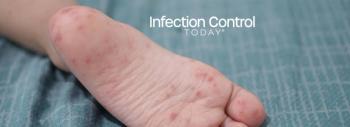
Loyola Nurses Eliminate Pressure Ulcers in Premature Infants
Infants born prematurely are at a significantly increased risk for pressure ulcers, yet nurses at Loyola University Health System have been able to eliminate this threat for patients in the hospitals neonatal intensive care unit.
While the toll of pressure ulcers has been recognized in adults for decades, the same concerns have only been reported in premature infants in recent years, says Lisa Festle, MSN, RNC-NIC, APRN/CNS, LUHS. Our nurses recognized the serious threat pressure ulcers pose to infants and implemented a program to protect the delicate skin of our youngest patients."
Pressure ulcers occur at a rate as high as 25 percent in high-risk premature infants. These infants are at a greater risk for pressure ulcers due to their extremely low birth weight, immature skin, need for medical equipment, immobility and imbalances in oxygen and blood flow. The most common locations for pressures ulcers in premature infants are the back of the head and the openings of the nose.
Loyola nurses gathered a multidisciplinary team of specialists to review literature and identify skin risk-assessment tools, skin-care products and pressure-reducing aids to help prevent pressure ulcers in this vulnerable population.
The group modified the Neonatal/Infant Braden Q Skin Risk Assessment Tool to detect pressure ulcer risk. They then tested the tool, developed intervention guidelines, implemented electronic medical record documentation and provided ongoing education to nurses.
The healthcare system has not had a consistent way to assess the risk for skin breakdown in premature infants, says Barbara Hering, MSN, RNC-NIC, APRN/CNS, LUHS. This program allowed our nurses to more easily recognize at-risk patients and implement interventions earlier to prevent pressure ulcers and subsequent complications.
Source: Loyola University Health System
Newsletter
Stay prepared and protected with Infection Control Today's newsletter, delivering essential updates, best practices, and expert insights for infection preventionists.






